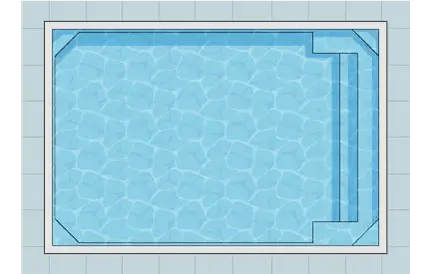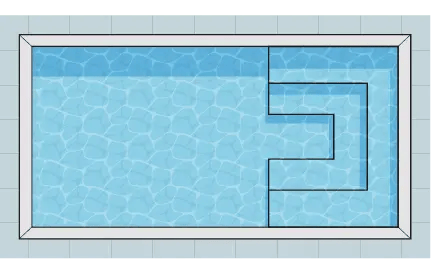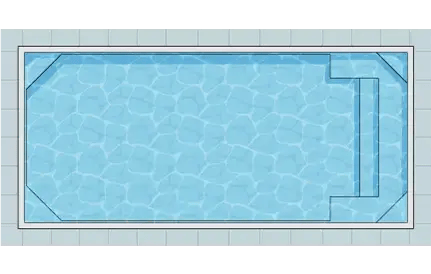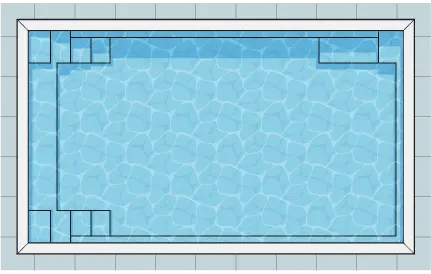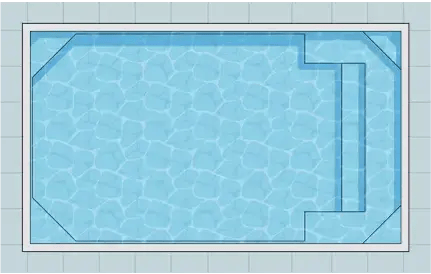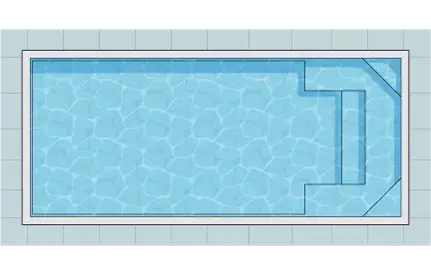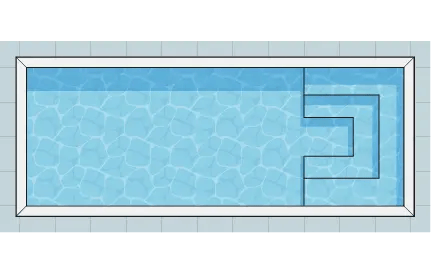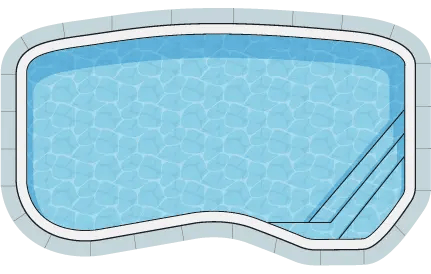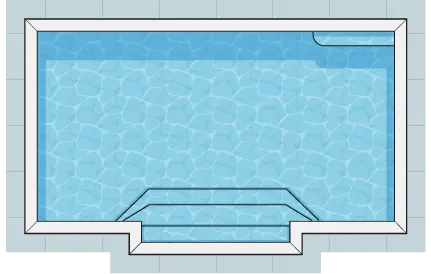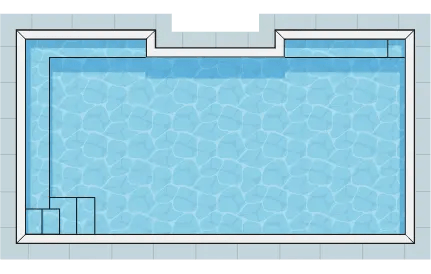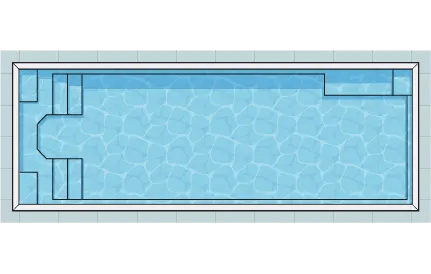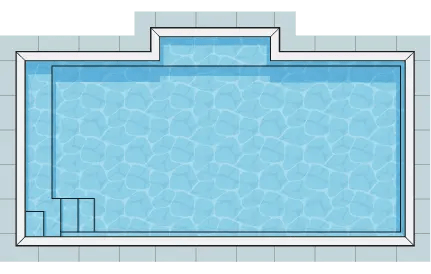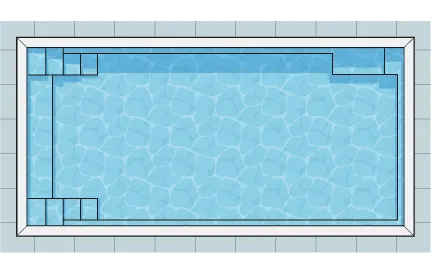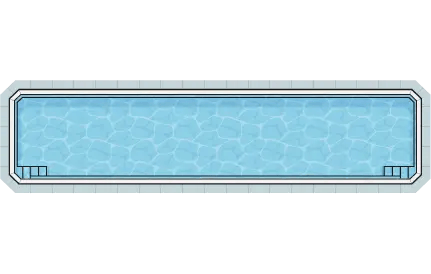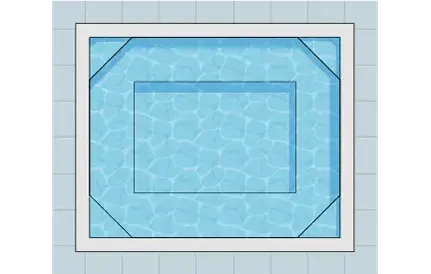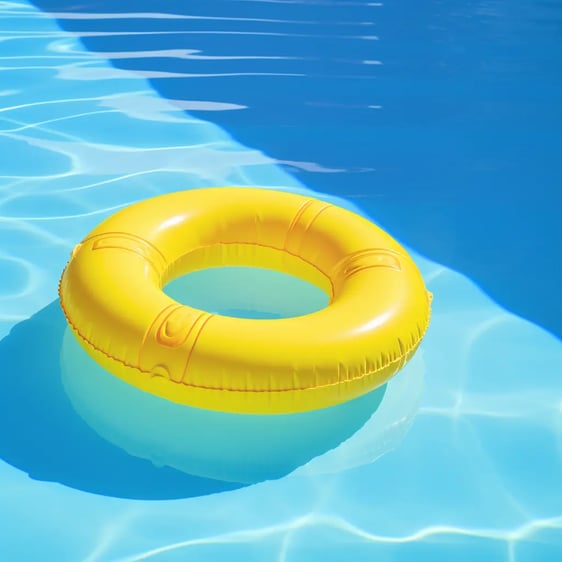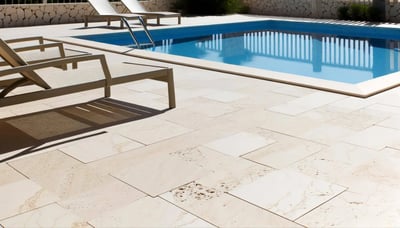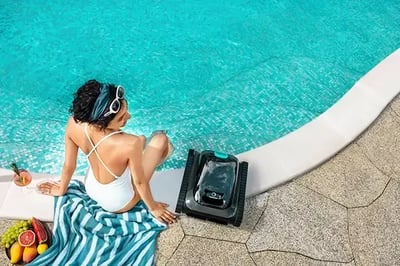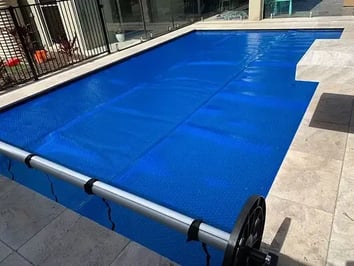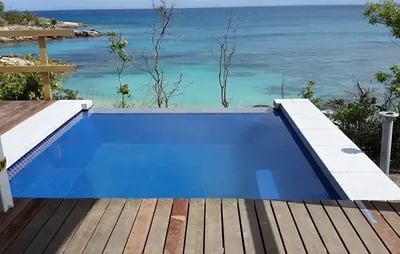Selecting the ideal fibreglass plunge pool is an exciting journey that can transform your outdoor living space. In this article, we'll explore the key factors that should guide your decision-making process. From budget considerations to the size and features that suit your lifestyle, making an informed choice ensures you create the perfect oasis for relaxation and enjoyment.
What is a Plunge Pool?
A fibreglass plunge pool is a smaller version of a swimming pool. It’s a great size for the kids to have a splash, swim and play games. For adults, plunge pools are a popular choice for backyards with limited space or if you don’t want a pool dominating the backyard and limiting your grass area. The great thing about plunge pools is that you can accessorise! Add some spa jets and you have a spa and plunge pool in one.
The versatility of plunge pools has seen them explode in popularity in recent years in Australia. As block sizes have become smaller and the cost of living has increased, plunge pools are a great choice.
How Much is a Plunge Pool?
A fibreglass plunge pool can vary in cost due to its size and the quality of the shell. When purchasing a plunge pool it's crucial to buy from a reputable pool company. There are a few DIY pool companies out there and it's important to purchase one from an established company that has been operating for many years.
Plunge pools have a price range starting at $12,500 for the pool shell, and they can extend up to $20,000. Keep in mind that this does not include installation and the final cost can vary based on the accessories you choose. It's crucial to carefully consider your accessory preferences because adding spa jets by drilling holes into the shell should be done before installation. Retrofitting this feature later can be challenging and costly. So, ensure your pool design meets your needs from the start to avoid complications down the road.
What filtration equipment is needed for a Plunge Pool?
As with a standard swimming pool, a plunge pool will need filtration equipment.
Filtration equipment for a plunge pool is essential to maintain water clarity and quality. Here's a list of the necessary filtration equipment for a typical plunge pool:
• Pool Pump: A pool pump circulates water through the filtration system. It pulls water from the pool, passes it through the filter, and returns it to the pool. Make sure that your pool company provides a pump that is appropriately sized for your plunge pool.
• Pool Filter: Which filter is best for a plunge pool? There are two types of pool filters: Sand/Media filters and cartridge filters. Each type has its advantages and maintenance requirements.
A Sand/Media filter uses glass media to filter the water and it backwashes to a drain.
A cartridge filter uses a cloth type material to filter the water and you clean the filter with a hose so there’s no need to plumb it to the main drain.
Cartridge filters can be a great choice for a plunge pool as there is no water loss due to backwashing. A plunge pool can lose a lot of water in one backwash which is costly and time consuming to replace each time.
• Skimmer Basket: A skimmer basket is located in the skimmer box and captures larger debris like leaves, twigs, and insects before they reach the filter. Regular cleaning of the skimmer basket is essential for efficient filtration. A filter sock is also a good idea to help keep leaf litter out.
• Pool Chlorinator: To maintain proper sanitation and disinfection, you'll need a chlorinator or salt chlorine generator to add chlorine to the water. These devices help keep the water free from harmful bacteria and algae.
• Automatic Pool Cleaner: While not strictly part of the filtration system, an automatic pool cleaner can help in removing debris from the pool floor, which contributes to better water quality.
• Pool Cover (optional): While not a filtration equipment component, a pool cover can help reduce debris entering the pool, which in turn lessens the load on the filtration system. It can also help retain heat and the Daisy cover can increase the water temperature by 8 degrees!
How much does a DIY Plunge Pool kit cost in Australia?
A plunge pool kit includes the fibreglass pool shell and the equipment needed to run it. When looking for a pool kit you need to have a budget in mind. You can have a basic package that includes just the pump, chlorinator and filter or you could opt for a package that includes magnesium mineral salts, a robot cleaner and a variable speed pump. Choose a package that sits in our budget and you can always add on items like minerals and a robot cleaner at a later date.
A plunge pool with a basic package including delivery starts at $17,900 and a package with Ozone chlorination and a DB2 robot starts at $23,000.
Choosing the Right Size
Small Plunge Pools: 3m x 2m, 4m x 2m
◦ Small Retreat: Small plunge pools are perfect for creating a cozy and intimate space for relaxation and cooling off. If you add spa jet then they can double as a spa and be used all year round
◦ Space-Efficient: They fit well in compact or urban outdoor areas with limited space.
◦ Low Maintenance: Smaller plunge pools typically demand lower maintenance and come with cost-effective heating options. The savings in heating expenses for a compact plunge pool make it feasible to enjoy year-round use.
Medium Plunge Pools: 4m x 2.5m, 5m x 2.5m, 4.4m x 2.28m
◦ Versatility: Medium-sized plunge pools strike a balance between relaxation and recreation. They offer more space for swimming, water exercises, and lounging.
◦ Design Flexibility: You have greater design freedom, including options for built-in features like benches, steps, or spa jets.
◦ Ideal for Families: Medium sized plunge pools can accommodate more people comfortably, making them suitable for families or having friends over
Large Plunge Pools: 6m x 3.5m, 6m x 3m, 7m x 3.5m
◦ Freedom to choose: Large plunge pools provide ample space for swimming laps and pool games.
◦ Personal Oasis: Large plunge pools offer a luxurious escape in your own backyard, providing a resort-like experience.
How Deep is a Plunge Pool?
Some plunge pools can have a flat bottom which means there is no deep or shallow end. Typically a plunge pool like this will be 1.29m in depth so approximately shoulder height. However, some plunge pools are big enough for a graded bottom where there is a deep and shallow end. The deepest end of these plunge pools is 1.9m.
Which type of plunge pool you choose depends on how you plan on using it. Some families prefer a deep end so the children can jump in the pool, whereas others like the safety of a consistent depth with a flat bottom pool.
How Much Space Do You Need for a Plunge Pool?
• Available Space: Your available outdoor space is a crucial factor in determining pool size. When planning your plunge pool, mark out the area to ensure it fits comfortably without overcrowding the space. A plunge pool is popular because it doesn’t dominate the backyard so choose the plunge pool that will sit well in the landscape of the backyard.
• Local Regulations: Check local regulations and building codes as they may stipulate minimum setbacks and safety requirements based on the pool size. In some states there is a minimum space requirement to a boundary fence and a stormwater drain. It’s always best to check with your local council.
• Usage Intentions: Think about how you intend to use the pool. If it's primarily for relaxation, a smaller pool may be best. However if you want to use it for swimming, a larger size might be more suitable.
Which Extra Features Should I Add to a Plunge Pool?
When planning your plunge pool, adding extras can elevate your overall experience. Consider these essential features to enhance your plunge pool:
Filtration and Water Circulation Systems
• High-Quality Filtration: Invest in a Dual Ozone system from Maytronics. This system neutralises any organic contaminant instantly and reverts back to oxygen while reducing chlorine by up to 80%. Less chlorine in the water results in softer, safer pool water that's gentle on the eyes and fantastic for sensitive skin.
• Variable Speed Pump: Opt for a variable speed pool pump to save energy and customise water circulation for different activities.
• Magnesium Mineral Chlorinator: Use Maytronics 100% Dead Sea minerals in the pool. The magnesium can be absorbed by your muscles for a true oasis. The rich magnesium content of the Dead Sea Minerals softens the water and elevates its quality, creating a noticeably gentler environment compared to conventional salt and chlorine pools.
• Robotic Pool Cleaner: A robotic pool cleaner can keep your plunge pool clean and debris-free with minimal effort. The DB2 is an excellent choice for an industry leading product.
Lighting Options:
• Deck and Landscape Lighting: Extend the magic beyond the pool with well-placed deck and landscape lighting for safety and aesthetics. If you have any established trees an uplight can make a stunning impact in the pool area at night time.
Heating
• Pool Heater: Install a pool heater to extend your swimming season or enjoy warm water year-round. Make sure the pool company selects the correct heater for your location. A heater needs to be sized for the size of the pool and also for the climate of your area.
• Solar Cover or Blanket: Improve heat retention and reduce evaporation with a solar cover or blanket, helping maintain water temperature. The Daisy cover can increase the water temperature by 8 degrees!
Extras
• Waterfall Blade: Create a tropical oasis feel in your backyard with a waterfall. Kids love a waterfall in the pool and the soothing sound is a great relaxing feature.
Are Plunge Pools Worth It?
In summary, the decision to invest in a plunge pool comes down to 3 key factors:
• Cost: Plunge pools are available in a range of prices, so consider your budget and choose a pool that leaves enough money in your budget for landscaping
• Size: The size of your plunge pool should align with your available space and intended use.
• Features: Think about the features that will bring you enjoyment for years to come. Do your research well and you will have all the features you want from the start with no costly retrofitting.
We have a range of Plunge Pools available at Swimming Pool Kits Direct so give us a call to talk through which option will suit you best.







